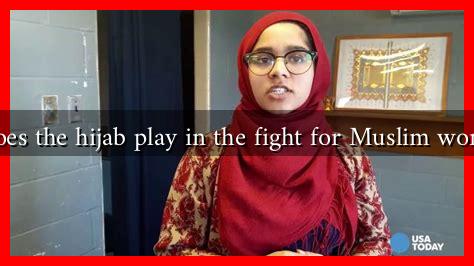-
Table of Contents
What Role Does the Hijab Play in the Fight for Muslim Women’s Rights?
The hijab, a traditional headscarf worn by many Muslim women, has become a symbol of both empowerment and oppression in contemporary society. As discussions around women’s rights and religious freedoms intensify, the hijab occupies a unique position in the discourse surrounding Muslim women’s rights. This article explores the multifaceted role of the hijab in advocating for Muslim women’s rights, examining its implications in various cultural, social, and political contexts.
The Hijab as a Symbol of Identity
For many Muslim women, the hijab is not merely a piece of clothing; it is a profound expression of their identity and faith. Wearing the hijab can serve as a declaration of personal autonomy and a rejection of societal pressures to conform to Western beauty standards. This aspect of the hijab is particularly significant in the context of women’s rights, as it emphasizes the importance of choice and self-determination.
- Personal Empowerment: Many women report feeling empowered by their choice to wear the hijab, viewing it as a means of asserting their identity in a world that often marginalizes them.
- Resistance to Stereotypes: The hijab challenges stereotypes about Muslim women, allowing them to reclaim their narratives and present themselves on their own terms.
The Hijab in the Context of Legislation and Rights
The hijab has also become a focal point in legal battles concerning religious freedom and women’s rights. In various countries, laws and policies regarding the hijab have sparked significant debate and activism.
- France’s Burqa Ban: In 2010, France implemented a ban on full-face veils, which many argued infringed on religious freedoms. This legislation prompted widespread protests and discussions about the rights of Muslim women to express their faith.
- Canada’s Bill 21: In Quebec, Bill 21 prohibits public sector employees from wearing religious symbols, including the hijab. This law has faced criticism for targeting Muslim women and limiting their employment opportunities.
These examples illustrate how the hijab can serve as a battleground for broader discussions about women’s rights, religious freedoms, and cultural identity. Activists argue that such laws not only undermine individual rights but also perpetuate discrimination against Muslim women.
Case Studies: The Hijab in Activism
Numerous organizations and movements have emerged to support Muslim women’s rights, often using the hijab as a central theme in their activism. Here are a few notable examples:
- Muslim Women’s Network UK: This organization advocates for the rights of Muslim women, emphasizing the importance of choice regarding the hijab. They work to combat stereotypes and promote understanding of diverse Muslim experiences.
- Hijab Day: Celebrated annually on February 1st, World Hijab Day encourages women of all backgrounds to wear the hijab for a day to foster understanding and solidarity with Muslim women.
These initiatives highlight the hijab’s role in fostering dialogue and promoting awareness about the challenges faced by Muslim women, ultimately contributing to the broader fight for gender equality.
Statistics and Public Perception
Public perception of the hijab varies significantly across different cultures and regions. According to a 2020 Pew Research Center survey, attitudes towards Muslim women wearing the hijab are often influenced by factors such as education, exposure to diverse cultures, and media representation. Key findings include:
- In countries with higher levels of education and multicultural exposure, there is generally more acceptance of the hijab.
- Negative media portrayals of Muslim women can lead to increased stigma and discrimination, impacting their rights and freedoms.
Conclusion: The Hijab as a Catalyst for Change
The hijab plays a complex role in the fight for Muslim women’s rights, serving as both a symbol of empowerment and a point of contention in legal and social debates. As Muslim women continue to navigate their identities within diverse cultural landscapes, the hijab remains a powerful tool for asserting their rights and challenging societal norms. By fostering dialogue and understanding, the hijab can catalyze change, promoting a more inclusive society that respects the choices and rights of all women.
In summary, the hijab is not just a garment; it is a multifaceted symbol that encapsulates the struggles and triumphs of Muslim women in their fight for rights and recognition. As society continues to evolve, the conversation surrounding the hijab will undoubtedly play a crucial role in shaping the future of women’s rights globally.
For further reading on this topic, you can explore resources from organizations like Muslim Women’s Network UK and Pew Research Center.

